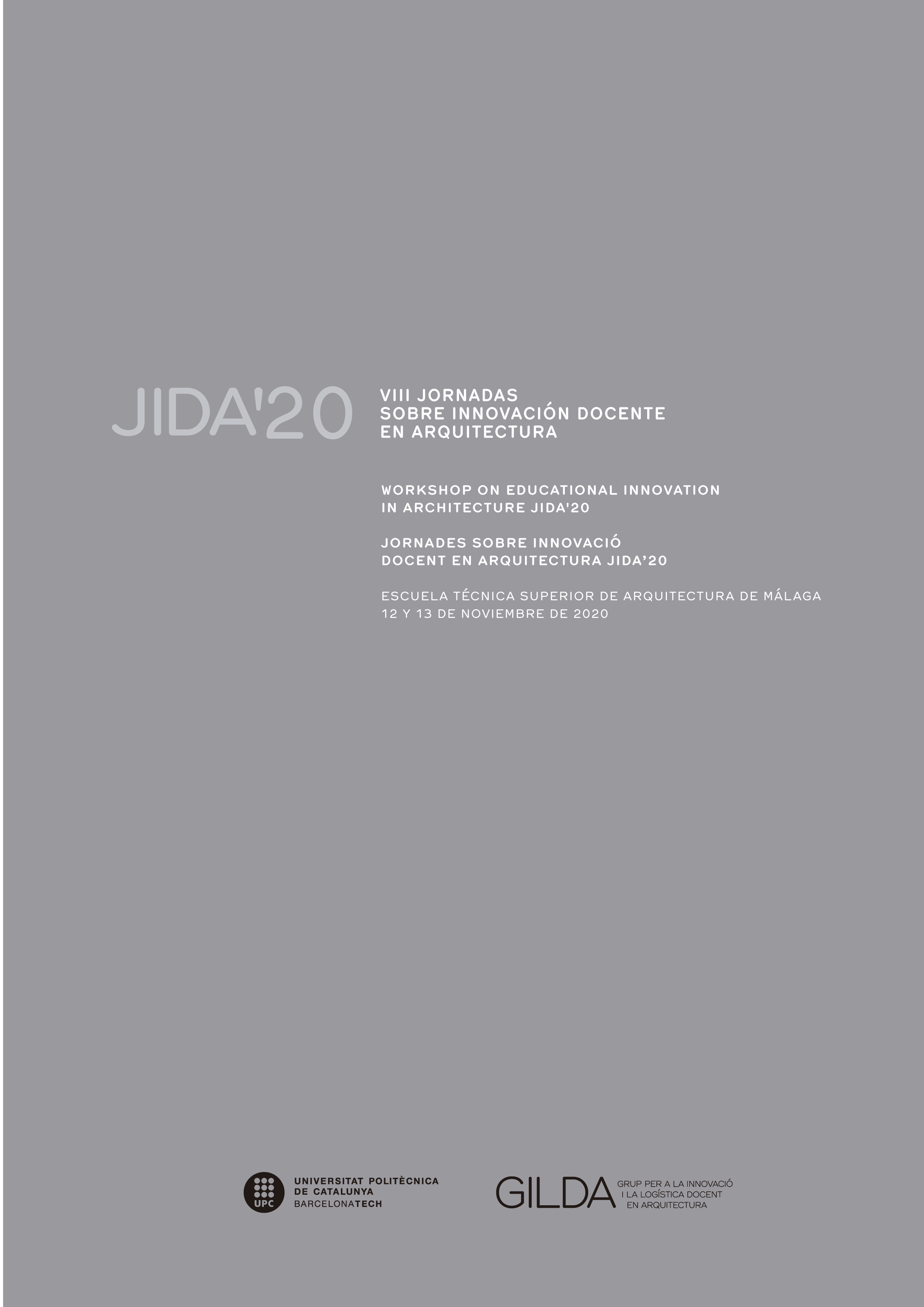Women’s History in Architecture. 50 years of reseach for a new teaching area
DOI:
https://doi.org/10.5821/jida.2020.9349Abstract
With the second feminist wave, architectural historians began studying the first generations of women architects inaugurating a new field of interest. Nowadays, the number of publications on women’s history in architecture is broad and diverse. Nevertheless, there are no defined teaching courses in this field in the curriculum of Spanish schools of architecture. This manuscript presents an innovative experience in this field carried out in an optional course of the fifth year of the Degree in Studies on Architecture. The aim of the course has been to introduce students to feminist thinking and to reflect on how diverse Anglo-Saxon research has produced discourses on their intertwine with the history of architecture.References
ADAMS, A.; TANCRED, P. (2000) Designing Women: Gender and the Architectural Profession. Toronto, Buffalo, London: University of Toronto Press Incorporated.
ANTHONY, K.H. (2006) Designing for Diversity. Gender, Race and Ethnicity in the Architectural Profession. Urbana, Chicago: University of Illinois Press.
BUTLER, J. (1990) Gender Trouble. Feminism and the subversión of identity. London: Routledge.
COLE, D. (1973) From Tipi to Skyscraper: A History of Women in Architecture. Cambridge: MIT Press.
COLOMINA, B. (1992) Sexuality and Space. New York: Princeton Architectural Press.
DE BEAUVOUIR, S. (2005) El Segundo Sexo. Madrid: Cátedra. [Primera edición en francés de 1949].
DURÃN, M.A. (2008) La ciudad compartida. Conocimiento, afecto y uso. Santiago de Chile: Ediciones Sur.
FRIDAN, B. (1963) The Feminine Mystique. New York: W.W. Norton.
GÜREL, M. Ö; ANTHONY, K.H. (2006) “The Canon and the Void: Gender, Race, and Architectural History Texts†en Journal of Architectural Education, vol. 59, issue 3, p.66-76.
HAYDEN, D. (1981) The Grand Domestic Revolution. Cambridge: MIT Press.
HEYDEN, H.; BAYDAR, G. (2005) Negotiating Domesticity: Spacial productions of gender in modern architecture. London: Roultledge.
JACOBS, J. (1961) Death and Life of Great American Cities. New York: Random House.
KULHMAN, D. (2013) Gender Studies in Architecture. Space, Power and Difference. London: Routledge.
LORDE, A. (1984) “Age, Race, Class and Sex: Women redefining difference†en Sister Outsider. Berkeley: Ten Speed Press.
OTTO, E. (2019) Haunted Bauhaus. Occult Spirituality, Gender Fluidity, Queer Identities, and Radical Politics. Cambridge: MIT Press.
PARLOUR: WOMEN, EQUITY, ARCHITECTURE, https://archiparlour.org/ [Consulta: 20 de septiembre de 2020].
PIONEERING WOMEN IN AMERICAN ARCHITECTURE, https://pioneeringwomen.bwaf.org/ [Consulta: 20 de septiembre de 2020].
POLLOCK, G. (1988) “Modernity and the spaces of femininity†en Vision and Difference. Feminism, femininity and the histories of art. London: Routledge.
TORRE, S. (1977) Women in American Architecture: A Historic and Contemporary Perspective (Susanna Torre, 1977)
UN DÃA UNA ARQUITECTA, https://undiaunaarquitecta.wordpress.com/ [Consulta: 20 de septiembre de 2020].
VALLERAND, O. (2020) Unplanned Visitors. Queering the Ethics and Aesthetics of Domestic Space. Montreal, Quebec: McGrill-Queen’s University Press.
WESMAN, L.K. (1992) Discrimination by Design: A feminist Critique of the Man-Made Environment. Urbana, Chicago, Springfield: University of Illinois Press.
WILLIS, J. (1998) “Invisible Contributions: The Problem of History and Women Architects†en Architectural Theory Review, vol. 3, issue 2, p. 57-68.
WILLIS, J.; BROWYN, H. (2001) Women Architects in Australia, 1900–1950. Melbourne: Royal Australian Institute of Architects.
WITTIG, M. (1982) “One is not born a women†en The Straight Mind and Other Essays. Boston: Beacon Press.






















